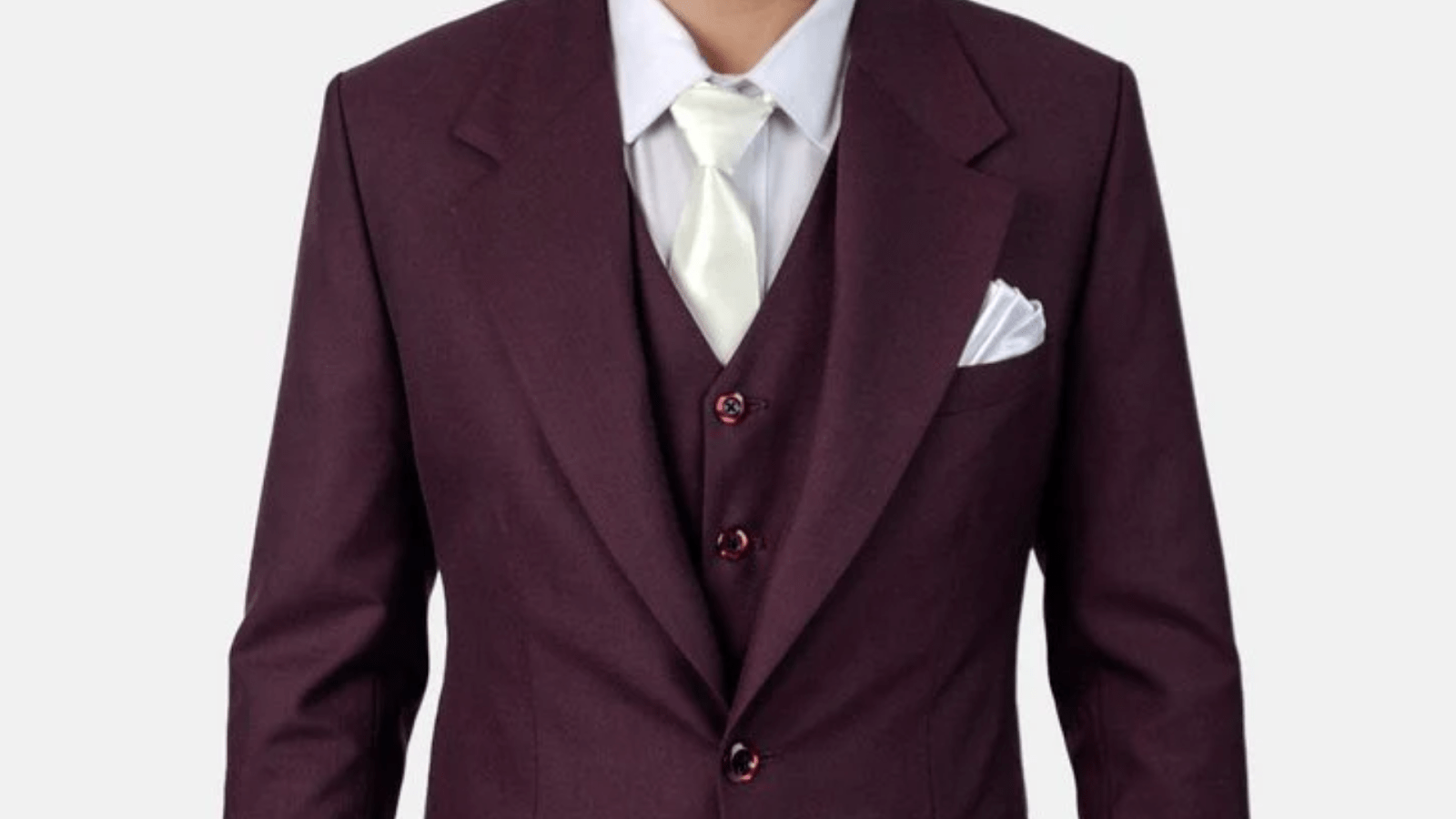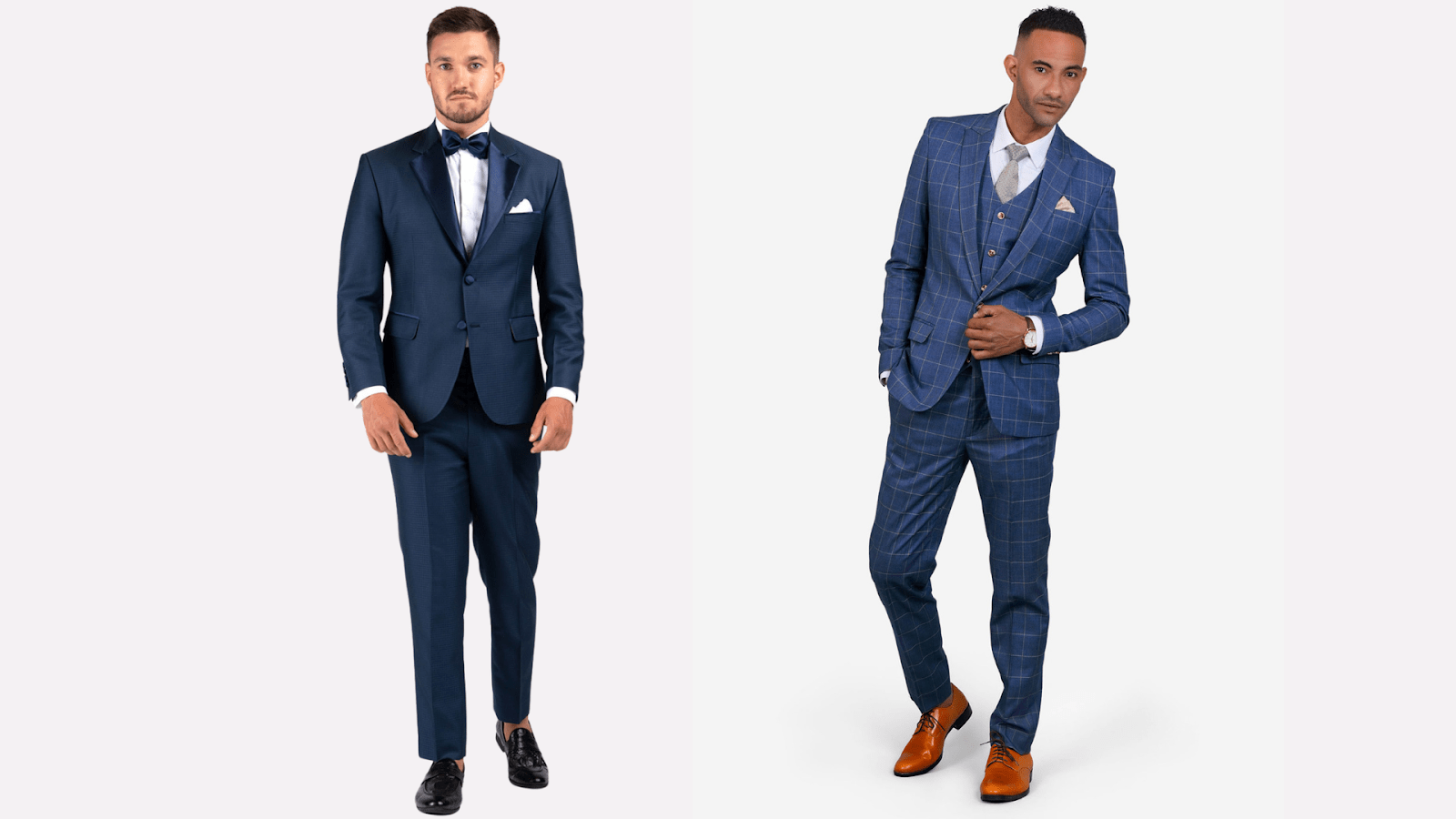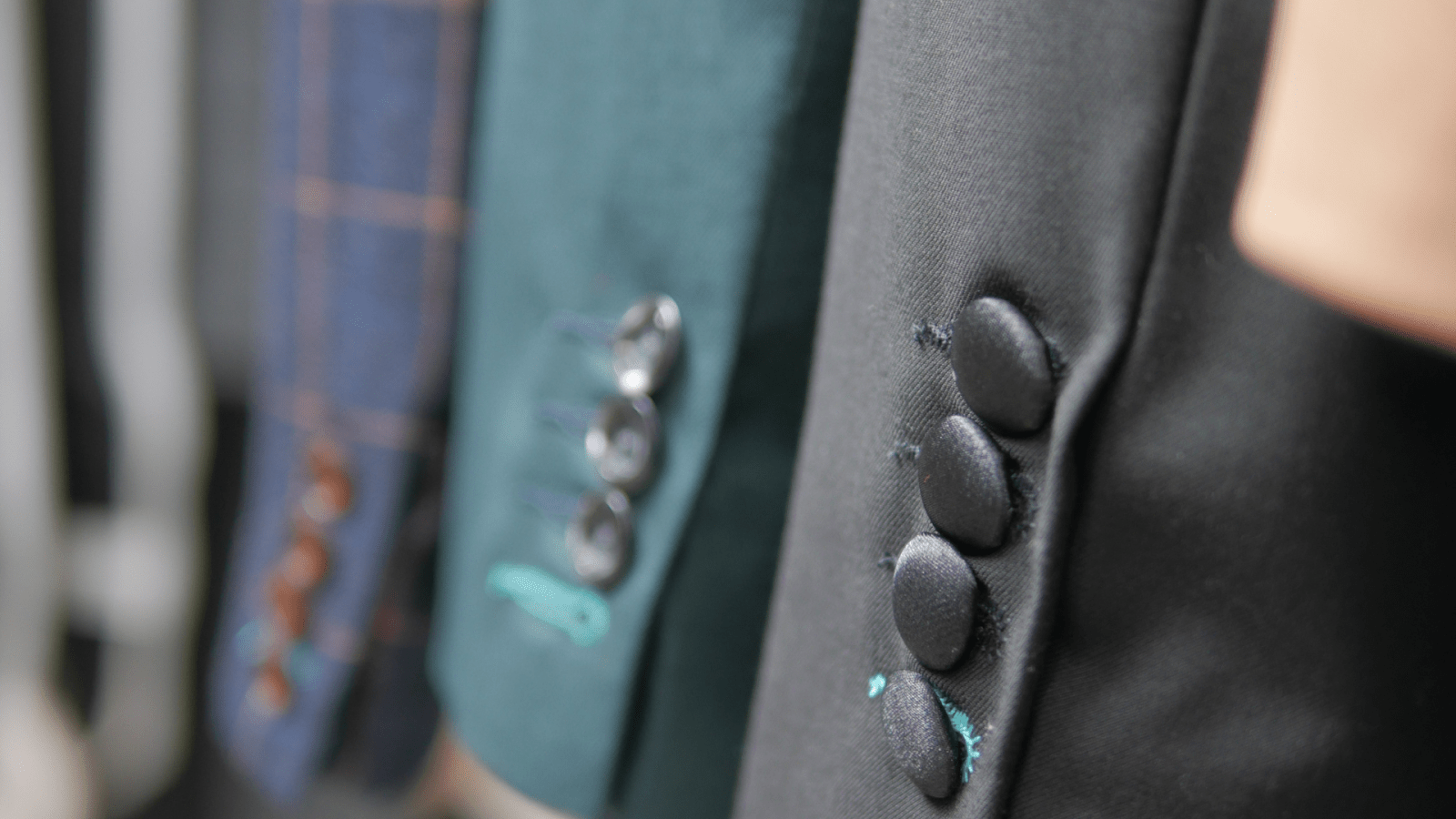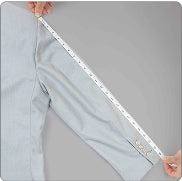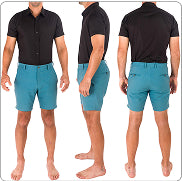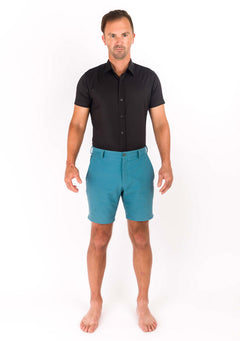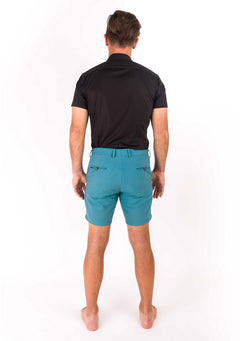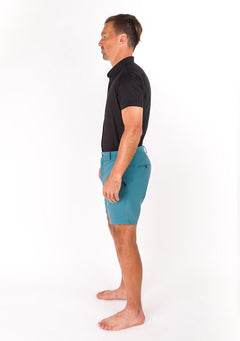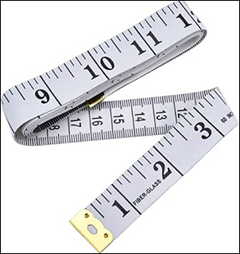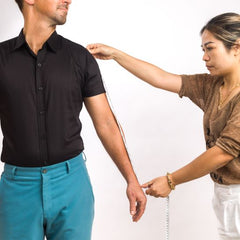
How To Travel With A Suit
Contents
- Why Traveling With A Suit Requires A Smart Strategy
- Best Suit Fabrics For Travel-Ready Style
- How To Fold A Suit Without Wrinkles
- Essential Tools For Traveling With A Suit
- Carry-On Vs. Checked: What’s Best For Your Suit?
- How To Handle Wrinkles After You Land
- Final Thoughts
- Frequently Asked Questions About How To Travel With A Suit
Key Takeaways:
- Best Fabrics for Travel Suits: Opt for wool or high-twist wool for wrinkle resistance and durability, or choose linen blends and cotton for lighter, breathable options.
- How to Pack a Suit Without Wrinkles: Master folding techniques for jackets and pants, and always unpack immediately and hang your suit on arrival to maintain a polished look.
- Essential Tools for Travel-Ready Style: Equip yourself with a garment bag, portable steamer, suit brush, and slim hangers to protect and refresh your suit on the go.
A sharp suit can travel well—if you know how to move with it.
The flight’s booked, the event’s locked in, and your Sartoro suit is ready to make an entrance. The only catch? Getting it there without looking like it rode in the overhead bin.
Whether you’re crossing time zones for a destination wedding or heading straight from JFK to a boardroom, your suit should look as fresh as your first espresso of the day. But travel doesn't always play nice with tailoring—unless you pack smart.
This guide walks you through the essentials: what to fold, what to hang, what to bring, and what to skip—so your suit looks as clean as your calendar.
Why Traveling With A Suit Requires A Smart Strategy
Mastering the art of traveling with a suit is more than just avoiding wrinkles—it’s about arriving confidently and maintaining your signature style wherever you land. Suits are delicate investments, and without a thoughtful approach, even the finest tailoring can be undermined by poor preparation.
The Vulnerability Of Fine Fabrics
Suits, especially those tailored from certain wools, linens, or silks, are susceptible to creasing, stretching, and fabric distortion. The journey from closet to airport to hotel closet introduces varieties of stress on seams, lapels, and shoulders that everyday wear simply doesn’t.
Space, Convenience, And Security
Packing a suit demands a balance between protection and practicality. Overstuffed luggage can crush structured shoulders and lapels, while folding or rolling incorrectly may lead to unsightly creases. Moreover, the suit’s accessories—ties, pocket squares, cufflinks—require careful organization to prevent loss or damage while in transit.
Staying Sharp On Arrival
Travel fatigue can make it tempting to settle for quick fixes, but a poor presentation is impossible to disguise in a formal setting. Keeping your suit looking its best upon arrival involves more than packing technique; it requires strategic forethought in what you carry, how you pack it, and what steps you take the moment you arrive. This planning ensures you greet every occasion as the best-dressed guest in the room.
Best Suit Fabrics For Travel-Ready Style
Selecting the right fabric is essential when prepping your wardrobe for travel. An optimal travel suit should balance resilience, breathability, and wrinkle resistance, guaranteeing you look sharp, wherever your next destination takes you.
Wool: The Timeless Travel Essential
Wool remains the gold standard for travel-friendly suiting. Naturally resilient and endowed with impressive wrinkle resistance, wool suits maintain a crisp, elegant appearance after hours in a suitcase. Mid-weight fabrics like worsted wool strike the perfect balance between structure and flexibility, making them a reliable choice regardless of climate.
Cotton: Lightweight And Relaxed
Cotton suits are great for warmer climates and short-haul travel. They’re breathable and easygoing, though they may wrinkle more than wool. Still, cotton holds its own for casual events or laid-back trips, especially when tailored with a modern cut.
Linen Blends: Laid Back Without The Crease
Pure linen gets a bad rap for creasing too quickly. But linen blends—especially with wool or cotton—reduce wrinkles while keeping that lightweight, relaxed feel. They’re ideal for beach weddings, resort dinners, or any warm-weather destination where cool style matters.
High-Twist Wool: The Frequent Flyer’s Best Friend
High-twist wool is engineered to resist wrinkles and bounce back after long flights. It’s tightly spun, which gives it natural stretch and durability. High-twist wool is your most brilliant play if your schedule has you city-hopping with no time to press a suit.
Each of these fabrics has its moment. What matters most is choosing the right one for your destination, schedule, and vibe.
How To Fold A Suit Without Wrinkles
Here’s a step-by-step approach that ensures your suit remains impeccable, no matter the distance.
Prepare The Suit
First, ensure your suit is clean and pressed before folding. Remove all items from the pockets to avoid creating bulges or misshaping the fabric. Doing this groundwork sets the stage for a wrinkle-free arrival.
How To Fold A Suit Jacket Without Wrinkles
- Step 1: Lay It Flat: Place your suit jacket on a clean, flat surface. Smooth out any creases with your hands to prep it for folding.
- Step 2: Fold Horizontally: Bring the bottom hem of the jacket up to meet the shoulders. Align the fabric carefully to avoid uneven pressure points.
- Step 3: Cross the Sleeves: Gently fold the sleeves across the back of the jacket. Make sure they lie flat and don’t bunch.
- Step 4: Fold Vertically:
Now, fold the jacket in half lengthwise, bringing the side seams together to form a compact square. Smooth out any wrinkles as you go. - Step 5: Add a Buffer (Optional): Insert a layer of tissue paper, a clean T-shirt, or a dry-cleaning bag between the folds. This helps reduce friction and keeps the fabric smooth.
- Step 6: Pack It Flat: Place the folded jacket at the top of your suitcase, not under heavy items. Avoid using tight packing cubes that apply pressure.
- Step 7: Unpack Right Away: As soon as you arrive, hang your jacket on a sturdy hanger. Use a portable steamer to freshen it up if needed.
How To Pack Suit Pants Without Wrinkles
- Step 1: Press and Prep: Ensure your pants are freshly pressed and fully dry before packing to prevent creasing or mildew.
- Step 2: Choose Your Fold or Roll: For folding, lay the pants flat and fold along the crease. Then fold in half from waist to hem. Insert tissue paper between folds to reduce wrinkles. For rolling wrinkle-resistant fabrics, fold the pants in half and roll tightly from waist to hem.
- Step 3: Layer Strategically: Place pants at the bottom of your suitcase to create a flat foundation. Add lighter items on top to hold them in place without pressure.
- Step 4: Use Garment Bags if Needed: For longer trips or formal events, consider using a garment bag designed explicitly for suits. It’s a reliable way to keep your look intact.
With the right technique, traveling with a suit becomes effortless. These steps keep your tailoring sharp, your look clean, and your style intact—no matter how far you go.
Essential Tools For Traveling With A Suit
Here’s what every style-conscious traveler should have at hand:
High-Quality Garment Bag
A robust garment bag is the cornerstone of suiting up on the go. Opt for a bag crafted from durable, breathable materials that shield against dust, moisture, and last-minute spills. Look for thoughtful details like reinforced handles, interior straps, and multiple compartments, which help prevent your suit from shifting and wrinkling during transit.
Slim Travel Hangers
Travel-friendly hangers made of lightweight, sturdy materials are remarkably effective for maintaining your suit’s structure. The right hanger supports the jacket’s shoulders, preserves the drape, and fits neatly into travel-specific garment bags or hotel closets. Choose hangers with non-slip grips to keep trousers from slipping.
Portable Steamer
Even with the most meticulous packing, minor wrinkles can happen. A compact, travel-approved steamer offers a quick solution to refresh your suit on arrival. Steamers are gentle on delicate fabrics, an additional plus for traveling with anything fragile.
Suit Brush And Lint Roller
A suit brush with soft bristles easily removes dust, lint, and surface dirt, reviving your ensemble and extending its wear between dry cleanings. A portable lint roller is also invaluable when preparing for that important meeting or event on the road.
Fabric Care Spray
Lightweight, travel-sized fabric sprays can neutralize odors and keep your suit smelling fresh. Look for formulas designed for wool and delicate blends—these can provide a sophisticated finishing touch after unpacking in your hotel room.
Armed with these tools, you can confidently arrive at your destination knowing your suit will reflect your sense of care, style, and preparedness.
Carry-On Vs. Checked: What’s Best For Your Suit?
When taking a trip that demands your best attire, how you pack and transport your suit is just as critical as how you wear it. The debate between stowing your suit in carry-on luggage or checking it in with your baggage is more than just convenience—it’s about maintaining the suit’s condition and ensuring you arrive looking sharp. Let’s break down these options to help you make an informed decision tailored to your itinerary and sartorial standards.
The Carry-On Advantage
Transporting your suit in a carry-on is the clear choice for those who value control and peace of mind. With your suit close by, you can monitor its handling, adjust it during your journey, and keep it away from the unpredictability of baggage carousels.
Wrinkles and accidental creasing become less of a concern when you use a garment bag or fold your suit properly within your carry-on. Plus, in the unfortunate event of lost baggage, you’ll avoid the stress of scouring unfamiliar cities for a replacement right before an important event.
The Case For Checked Luggage
There are moments when a checked bag is inevitable—perhaps due to lengthy trips, multiple outfits, or tight airline restrictions. Checking your suit in means utilizing a larger suitcase or a specialized garment bag designed for extended travel.
These options allow for more space and less aggressive folding, potentially minimizing deep creases. However, checked luggage exposes your suit to more handling, stacking, and sometimes less-than-gentle treatment, increasing the risk of wrinkles or damage.
Determining The Right Choice For You
Ultimately, the best choice hinges on your travel plans and priorities. Short trips with strict timelines often favor the versatility and safety of carry-on luggage. A well-padded and properly arranged checked bag may be more practical for longer journeys, or if you’re carrying several formal outfits.
Consider your suit’s fabric, the purpose of your trip, and how much control you prefer when traveling. Your approach should protect not just your suit but also the confidence and poise it represents.
How To Handle Wrinkles After You Land
There’s nothing quite as deflating as unpacking your suit after a long journey and discovering unwanted creases. With an eye for detail and a bit of strategy, you can rejuvenate your suit and ensure it looks immaculate once you reach your destination. Here’s how to tackle those travel-induced wrinkles and restore your suit’s sharp, sophisticated silhouette.
Unpack Immediately
Remove your suit from your luggage as soon as you arrive at your hotel or accommodation. Hang it on a wide, sturdy hanger to allow the fabric to breathe and settle. The sooner your suit is hanging, the less time those travel-induced creases have to set in.
Use A Portable Steamer
A portable garment steamer is a traveler’s best friend. Fast-acting and gentle, it loosens wrinkles without the direct pressure of an iron, preserving the integrity of fine suiting fabrics. Hang your suit and run the steamer over each panel, allowing the gentle steam to relax stubborn wrinkles and bring back the suit’s structured drape.
Leverage The Shower Steam
If a steamer isn’t available, let the bathroom do the work. Hang your suit on the back of the bathroom door, then run a hot shower with the door closed. The steam will help soften the fibers, making wrinkles less pronounced. In about 15–20 minutes, your suit will look noticeably refreshed and ready to wear.
Spot Press With An Iron (If Necessary)
For deep-set wrinkles, use an iron with extreme caution. Place a clean cotton cloth between the iron and your suit to prevent shine or fabric damage, and use the lowest heat setting possible. Focus only on visibly wrinkled areas, avoiding seams and lapels where over-pressing can alter the suit’s structure.
Finish With A Gentle Brush
Once your suit is wrinkle-free, brush it gently with a soft garment brush. This removes any last traces of lint or dust and revives the fabric’s natural luster, ensuring you look composed and put together.
Final Thoughts
Traveling with a suit doesn’t have to feel like a gamble. With the proper prep, fabrics, tools, and packing strategy, your Sartoro suit can arrive as crisp and composed as when it left your closet. Whether flying cross-country for a wedding or heading straight from the tarmac to the boardroom, a little planning goes a long way. Keep your look sharp, your confidence high, and your arrival effortless—because first impressions don’t wait.
Read also:
Frequently Asked Questions About How To Travel With A Suit
Can I carry a suit on a plane?
Yes. Most airlines allow you to bring a suit as part of your carry-on, especially if you use a dedicated garment bag. Look for overhead bins or ask a flight attendant if there’s a closet for hanging items in the cabin. Sartoro recommends carrying your suit in a high-quality garment bag to protect the fabric and maintain its sharp lines during your journey.
What are the airline restrictions for traveling with suits?
Airline policies can vary, but most carriers treat garment bags as carry-on items if they meet size regulations (typically around 22 x 14 x 9 inches). Confirm with your airline before departure, especially for international or regional flights, and consider premium cabins to access hanging wardrobes.
Is it worth investing in a travel suit?
Without question, a dedicated travel suit, expertly tailored and crafted from wrinkle-resistant fabrics, pays for itself in professionalism and convenience. Sartoro offers unstructured and lightweight options that resist creasing and maintain form, ensuring you arrive as impeccable as you departed, whether for business or special occasions.
What materials are best for a travel suit to minimize wrinkles?
Look for high-twist wools, performance blends, or wool with a touch of stretch. These fabrics recover well from packing and resist wrinkling, making them an ideal choice for frequent travelers. Sartoro’s curated fabric selection includes multiple options chosen explicitly for resilience and comfort on the move.
How do I unpack my suit upon arrival?
Immediately remove your suit from the bag and place it on a quality hanger. Steam or gently spray with water to loosen any wrinkles, and allow the garment to breathe for several hours before wearing. Many hotels offer steamers or pressing services—take advantage if needed for a flawless finish.
How should I pack accessories like ties and belts with my suit?
Roll ties loosely and pack them in a hard case or within shoes to prevent wrinkles. Belts can be rolled and placed along the perimeter of your suitcase, saving space and maintaining shape. Keep pocket squares folded with tissue paper or store in a small pouch to avoid creases.

























